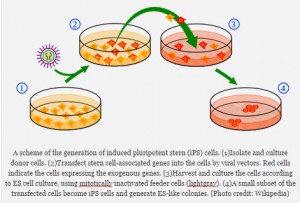
A 70-year-old Japanese woman with a debilitating eye disease (macular degeneration) has just received the first implant of stem cells created from her own cells. Called induced pluripotent stem cells (iPSCs), these can become any type of cell in the body, obviating the moral debate about embryonic stem cells and promising to help the body just as effectively to regenerate tissue – without fear of rejection.
This pilot study that will be done with six patients and include regular monitoring for a year after each procedure. Safety testing for rejection and possible tumor formation was conducted with mice and monkeys before the human pilot.
At last, a decisive step in breaking the stem cell research field wide open.
Related articles

